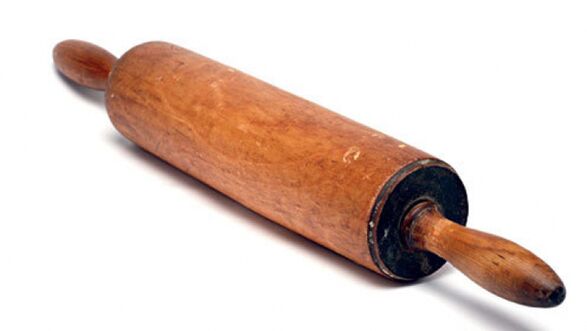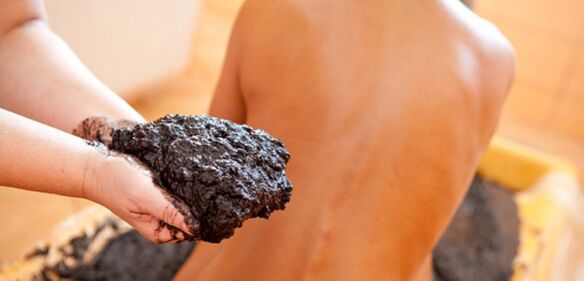Due to the low mechanical strength of the seven microvertebrae and weak muscle bundles in the neck, lack of treatment for osteochondrosis in this department leads to serious consequences.The nerve root is compressed due to protrusion or hernia, becomes inflamed, swollen, and fills the spinal canal.Pain in the neck; temples or back of the head or top of the head; arms and shoulders.

The body experiences a certain stimulus - it triggers the formation of "bridges" of rigid bone tissue that support the vertebrae.
Their sharp edges irritate the tiny nerve fibers - the pain returns and the neck "crunches" when you move your head.It may also compress the vertebral arteries that pass through the openings in the cervical vertebrae, complicating the blood supply to the brain.Hospitalization is inevitable.
How is cervical osteochondrosis treated when symptoms first appear at age 20?Can treatment be done at home?
How to Treat Cervical Chondrosis at Home and Work?
Cervical osteochondrosis can be treated at home only when the exacerbations subside.
When using folk methods and "home" procedures (massage, gymnastics), blood flow to the affected area is accelerated, and the use of these methods in the acute phase may aggravate the course of the disease, increase swelling and inflammation.
Osteochondrosis of the cervical spine heralds neck fatigue and slight tension, so they begin treatment at home, correcting the "life routine":
- Take a 5-minute break every hour after get off work.After writing a paper or working on the computer for more than 3 hours in a row, take an hour's rest - do the following neck exercises, "stretch" the spine through stretching and "arching" in different directions, and walk around the office;
- The distance from the floor to the tabletop should be at least 70 centimeters, and the chair can be lifted, lowered, and rotated, with a backrest and armrests;
- If you are sitting in a chair and your feet cannot reach the ground, use a tripod.

One more thing: many people note that the next "domestic" scandal will end in a headache.
Excessive tension on the nerves "squeezes" the muscles, and the discs become fed by the small nuggets of nutrients supplied by the spasming muscles.
How to treat cervical osteochondrosis at home?
The diagnosis of "cervical osteochondrosis" is known; what are the characteristics of further treatment at home?
Further efforts to prevent disc degeneration aim to increase physical activity and improve blood supply to the spine and neck areas.For this, massage and gymnastics can be used.
massage
Cervical osteochondrosis massage at home can stimulate the alternate inflow and outflow of blood in the cervical spine, help strengthen muscles, eliminate excess lactic acid in the muscles, and relieve muscle spasms.The duration of the massage is 15 minutes for the first session and approximately half an hour for subsequent sessions.

The massage begins by moving from the shoulder blades to the back of the head, then caressing the back of the neck.The massage therapist uses one or both palms to gradually increase pressure on the skin.Next, in a similar manner, "squeeze" the muscles with the edge of the palm, then vigorously rub the cervical spine with the fingertips, knead the neck muscles, and move them to the other fingers with the thumb pads.At the end of the treatment, use your palms to caress your neck.
The duration of each action is 2-5 minutes.
It is important to master the skills of self-massage; the treatment sequence for cervical osteochondrosis is as follows:
- Press your palms on both sides of your neck, alternate circular and longitudinal strokes, and move down from the back of your head to the scapula joint;
- The action is similar to the previous one, rub the skin on the neck;
- After you've rubbed your skin thoroughly, continue kneading your muscles.Moving up and down, bend four fingers and use the pads of your fingers to knead the neck muscles near your spine in deep circular motions.To avoid squeezing the artery, do not use excessive force on the muscles on the front and outside of the neck;
- After stretching your muscles, continue self-massage with clapping motions;
- Complete it with gentle stroking movements.
The occurrence of cervical osteochondrosis is often caused by insufficient peripheral circulation and lymph stasis, so it is advisable to use vacuum suction cups for self-massage.
Vacuum therapy stimulates blood flow and lymphatic drainage, enhances muscle contraction function and normalizes blood pressure by expanding the local blood "network", thereby quickly relieving cervical osteochondrosis and improving the effectiveness of home treatment.
gymnastics
After the pain subsides, gymnastics designed to treat cervical osteochondrosis can be performed at home.Exercises for cervical osteochondrosis are chosen individually; if pain recurs while performing these exercises at home, you should contact your doctor or exercise therapy trainer.
The following exercises are safe for treating cervical osteochondrosis at home:
- Sit in a chair with your back and neck straight:
- Reach the extreme position and turn your head left and right smoothly;
- Gently lower your head and try to touch your chin to your chest;
- Do not straighten your neck, tuck your chin, or tilt your head back;
- Take a closer look at the antics of the little puppy's head: holding it on its straight neck, "writing" small circles with its nose.Practice with him.
These exercises are designed to treat cervical osteochondrosis at home by "mobilizing" the cervical spine, stretching the muscles of the posterior cervical spine, and restoring flexibility to the neck.
Perform each exercise up to 12 times.
- Sit at your desk with your back straight:
- Place your left elbow on the table and your palm on your temple.Tilt your head to the left and resist with your hands.Relax.Do this 8-10 times.Perform a similar movement to the right;
- Place your palms on your forehead and press your head against your forehead for about 10 seconds; your hands "resist" the pressure.Can be executed up to 10 times.Do the same exercise with the other palm;
- Bring your arms down along your body and pull your shoulders up, holding this position for 10-12 seconds.Relax and breathe for 10-12 times.
Such gymnastics are necessary for osteochondrosis of the cervical spine, strengthening the muscles of the lateral and anterior neck and relaxing them at home.
- For headaches while sitting or lying on the floor:
- Use your fingertips to intensively knead the neck muscles on the back of your head for 3-4 minutes;
- Rub the shoulder blades area and the area between them with the palm of your hand - 5-6 minutes;
- Massage the temple area using light circular motions.
Exercises for cervical osteochondrosis can strengthen the paravertebral muscles, increase their plasticity, and maintain the health of the entire "pillar of life" at home.
Folk remedies for cervical osteochondrosis
grandma's secret
Do you remember how your grandmother used folk remedies to treat cervical osteochondrosis?Use a rolling pin!Don't worry, the method isn't traumatic at all: Just place the "exercise machine" behind your back, roll it from top to bottom (without hernias and protrusions!), and use a rolling pin to gently tap your shoulders, shoulder blades, and areas along your spine.
Cervical osteochondrosis subsides quickly because this at-home treatment is actually a kind of gymnastics that instantly relaxes tense muscles and promotes intensive blood supply to the cervical spine and other parts of the spine.

herbal medicine
This disease affects the cervical spine, "restricting" its mobility.Treatment with the following folk remedies will help relieve worsening osteochondrosis:
- Cervical osteochondrosis responds well to celery treatment.According to reviews, folk medicine is effective in treating cervical osteochondrosis because its roots have analgesic and edema-reducing effects.Pour 3 g of crushed roots into a liter of boiling water and leave for 8 hours.Before every three meals, take a spoonful of the prepared strained product;
- Cut the stems and flowers of coltsfoot and place them in ammonia solution in a dark room for 30 days.Apply the taut product to the painful area of the neck.
home physical therapy
It is difficult to imagine traditional treatment of cervical osteochondrosis without various types of heating of the affected segments.How to treat cervical osteochondrosis at home?
Common folk remedies such as mud and paraffin are very effective in treating cervical osteochondrosis.

The application of mud "charges" the cervical vertebrae with all necessary minerals, and the application of paraffin helps to prolong the warming effect:
- If cervical osteochondrosis presents as mild neuralgia, you can treat it with mud packs at home.The best peat mud for home surgery.Its application is suitable for the nape of the neck and hands.
The mud is heated to 27-28 degrees when applied to the neck and collar area, and to 48-50 degrees on the hands.
This temperature regimen provides maximum analgesia and anti-inflammatory effects.Mud sessions are performed every other day for a total of 10 times, with each session lasting no more than a quarter of an hour;
- Paraffin application is performed by covering the cervical and shoulder areas from the back.The course of treatment is similar to before, 10 times every other day, 15 minutes each time.
Home physical therapy includes neck massage and therapeutic exercises.Don't ignore your painful feelings and take care of your health!
























